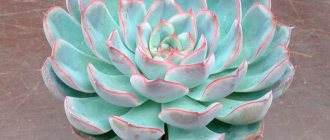Reproduction of ficus at home is a good thing and not easy. It all depends on the type of ficus and the choice of propagation method.
Regardless of the type and variety of ficus, its presence in the house is always a luxury of greenery and a piece of nature in your home. Depending on the variety, there are very colorful and variegated forms of ficus . Ficus propagation is a whole process in which you need to know and fulfill all the conditions and processes.
Ficus propagation, methods
You will need to choose a propagation method: cuttings, layering, through a leaf. You can, of course, try to propagate ficus with seeds, but this is such a long process; propagating ficus with seeds can be more difficult than other methods. As mentioned above, depending on the type of ficus and its growth form, we choose the propagation method we need. Many people use ficus propagation by cuttings, as well as other propagation methods, which we will consider below.
Features of breeding different varieties
Indoor ficuses are divided into many types. Caring for each of them involves separate vegetative propagation. It is necessary not only to create comfortable conditions, but also to be able to plant the ficus correctly. Benjamina is a variegated representative, which is suitable for all the above-described types of vegetation. This type includes such varieties as:
- starlight;
- kinks;
- Natalie and others.
The easiest way to propagate these plants is by cuttings. Also, when forming the crown of a young plant, you can tear off the top and use it for further propagation.
Broadleaf rubber plants are propagated by air divers or cuttings. It is not advisable to cut off a leaf from such plants: it will not be able to become a full-fledged plant, even if the root system develops. The most popular varieties of this species are Belize, Abidjan, Robusta, Tineke, etc. Bush ficus is propagated by cuttings. The most striking representative of dwarf ficus is the anuk.
Dividing the main bush
This method is very simple, usually when you replant a ficus, and it is better to do this in the spring, when the plant wakes up and enters the phase of active growth and development. When you repot a ficus, you remove the plant from its pot. Before transplanting it into a new pot, you should inspect the plant for damage and the presence of new young shoots. They usually come from the root and are located next to the main plant. This method is well suited for propagating dwarf ficus (pumil) and sometimes for rubber ficus. Especially when the plants are still young and have not formed into one trunk.
Read on to learn how to propagate ficus macrophylla and other ficus trees when dividing the main bush.
Carefully separate the young plant and plant it in a separate container or pot. We plant the main plant in a new pot. We take care of the main plant after transplantation and the new one. Both need good care, as the ficus suffered stress. Therefore, new shoots or growth of existing ones can be observed after a few weeks.
A few important nuances
Have you decided to grow ficus at home? Then you most likely know that most plants are propagated in three ways: cuttings, layering and seeds. It’s worth noting right away that the latter method only makes sense if you are a professional breeder. But all other methods will show simply excellent results. But before breeding, a number of certain nuances should be taken into account.
- Season. It is strongly recommended that the breeding procedure be carried out exclusively during the warm season. The ideal months are May and August. However, if you decide to propagate ficus in June or July, then your idea will most likely also be crowned with success. But in winter or late autumn it is better not to disturb the plant. Even if you manage to propagate a ficus, the shoot will often hurt and generally look weak.
- Sun protection. Young shoots react extremely negatively to direct sunlight, so cuttings will have to be done in the northern room, where the risk of burns to the leaves will be minimal. If this option is not possible, then be sure to use shading. This can be done using thick fabric or a special garden net, the shading percentage of which is 60%.
- Clean and sterile. As soon as your shoots give the first roots, you will have to transplant them into separate pots, having previously treated the cuttings with a root formation stimulator. However, all instruments used must be clean and sterile. The same applies to the process of harvesting planting material. Be sure to treat scissors or pruning shears with an alcohol solution or potassium permanganate.
- Watering. During the first days after transplanting the young cutting into a separate container, you will have to use only warm and settled water. It is best to give preference to the life-giving liquid that is collected after rain. Well, or as an alternative, carbon filtered water is suitable. However, in any case, it must first acquire a soft structure by standing for 2-3 days before it can be used for watering.
And these are just the main nuances that relate to the propagation of ficus by leaves or cuttings. Also, experienced gardeners give quite a lot of useful advice on how best to carry out this or that procedure. In the following sections you will find more detailed information on this matter. In addition, they will also present a detailed algorithm of actions that must be followed in order for reproduction to be successful.
Ficus propagation by air layering
The ampelous or climbing type of ficus (pumila) can be propagated well by layering. As for other types of ficus, this method of propagation can also be used. To do this, you need to select the desired shoot and dig it in the same pot. If the shoot is long and bends well, it can be buried and secured in a separate pot, which will be located at a close distance from the main ficus pot. The shoot should be fixed in the ground. As soon as, after a while, this shoot forms roots, it can be cut off from the mother plant.
You can also use another method: for this you need to select the desired stem from the plant. and we will propagate it by air layering. We make an incision on the shoot. The juice that comes out after the cut must be removed with a napkin. We also determine the height of the cut. Typically, this method is used to rejuvenate ficus, which for some reason has lost its decorative appearance.
In the chosen place we remove the leaves; the cut should not be deep and not too long. Try to carefully insert a sliver of wood or a piece of toothpick into the cut. This will prevent the plant from tightening the cut. We treat the cut site with a root formation stimulator. Next, wrap the area with damp moss (you can use sphagnum). The area should be wrapped in film or a bag and secured. So that he doesn't fall down and move out.
We use tape or rope, but try not to overtighten. This can disrupt the sap flow in the main shoot on which we carry out the propagation method. Allowing the moss to dry out is not allowed, so we will moisten it only in one place. This place is the upper part, so there we will sometimes have to open the film and additionally moisten the moss. After a month, roots will form on the cut. You should wait until there are enough of them.
Then we cut off the shoot and plant it in a permanent place in a separate pot. We take careful care of the new shoot. It also needs high humidity and a lot of light and heat.
How does ficus grow?
How to grow ficus correctly?
For normal development, ficus needs to be watered frequently.
Ficus grows intensively in the summer, so at this time it needs more water than usual. In autumn and winter, watering is reduced (we wrote about caring for ficus in winter here).
Water to moisten the soil should be 2 degrees higher than the room temperature.
Help: water from a regular tap contains calcium, chlorine and various impurities that can cause great harm to the plant. Therefore, for irrigation you need to use pre-purified, soft water at room temperature.
The leaves of the plant wrinkle and lose moisture when the air in the room is dry.
For normal growth of ficus, its leaves need to be periodically sprayed and wiped with a damp cloth. This helps clean the stems and leaves of dust, increases photosynthesis and humidifies the air in the room.
With proper lighting, moisture, and temperature conditions, the ficus grows and develops well.
In summer, the pot with the plant should be taken out into the fresh air.
In winter, it is advisable to maintain the room temperature at least 15 °C.
It will be useful for everyone who is the happy owner of a ficus or is just planning to grow this plant at home:
- how to care for it;
- what are ficus diseases and how to treat them;
- what is harmful and what is useful about the flower.
Ficus perfectly decorates any interior, looks impressive both in an ordinary city apartment and in a spacious country house.
The plant with lush foliage in a variety of green shades is easy to grow even for novice gardeners.
Ficus propagation by apical cuttings
This is a fairly proven and most popular method of reproduction. You need to select the shoot that you will use for propagation. It should be well developed and without signs of disease.
To make a good cut, you may need special tools. This could be a sharp knife or pruning shears. The instrument must be disinfected. Otherwise, you can introduce an infection both to the main plant and to the shoot for cuttings.
The cut should be made at 45 degrees. The length of the shoot can be twenty centimeters, but not less than ten. It all depends on the presence of dormant buds on the cutting and at what distance they are located. Both the main shoot of the ficus and the side shoot are suitable for cuttings. Especially if your ficus has grown and with formative pruning, you get several shoots that can be used for propagation.
Inspect the cutting to ensure that its bark is intact and without signs of damage. If desired, you can shorten the stalk or divide it into several parts.
Next, we take a container of water, it should be at room temperature, and we place our cuttings in it. We change the water in a glass or jar regularly, this will not allow it to stagnate. To prevent the cuttings from rotting, crushed tablets (activated carbon) can be added to the water. The container for cuttings (if it is a jar) must be wrapped in something dark, or use a dark container.
This is necessary so that the water does not begin to bloom in bright light. If you get very short cuttings. Then they can be fixed at the edge of the container. You can use a circle made of paper or cardboard. Be sure to tear off the lower leaves of the cuttings, and generally try to ensure that the remaining leaves do not touch the water. Only the lower part of the shoot/cutting should be in the water.
Place the container with the cuttings in a warm and bright place. The cuttings should not be exposed to direct sun, but the area should be well lit. If moisture begins to evaporate in your container. Water can be added to the desired level. Or replace it completely.
You can use cuttings for propagation directly into the ground. To do this, we simply take a container in which we will root our cuttings. We use a mixture of peat and sand, for better rooting, the ends of the cuttings can be treated with root formation stimulants.
We simply stick the cuttings into the prepared soil. But in this case, you will need to use a greenhouse. It can be made from a plastic bag or plastic bottle. This is necessary in order to maintain constant humidity.
Ficus trees do not take root quickly, so be prepared to wait a few weeks. If you used a container with water, then you can determine whether there are roots on the cuttings by simply inspecting the cuttings. When roots appear, we take the cuttings and plant them in a permanent place, in the required pot size. But when using ficus cuttings and its rooting in the soil, here we look at the appearance of new leaves on the cuttings.
As soon as new leaves appear, the cuttings can be replanted. But my advice is this: use a separate pot for each cutting, or use peat pots. This is necessary so that when transplanting to a permanent place, you minimally injure the young roots. Than if you planted several cuttings in one pot.
Caring for the cuttings in the first weeks
Now you know how to propagate large-leaved ficus from cuttings without leaves. However, it is worth understanding that the process of rooting a cutting in the soil is quite lengthy, even if you have previously treated the lower surface with a root formation stimulator. As a rule, the first roots will begin to appear in a week, but it is possible to say with particular confidence that the plant has taken root only after 4 weeks.
The main task of the grower during this period is to maintain optimal conditions for growth. In 90% of cases, plant death at this stage occurs due to excessive waterlogging. However, lack of moisture will also negatively affect the health of the sprout. Therefore, most professionals recommend watering the ficus in small portions as soon as the top of the substrate begins to dry out.
As for fertilizer, they should not be applied during the first 3 months unless absolutely necessary. However, if you notice a noticeable lag in the growth of some cuttings, you can use organic supplements designed for ficus. You should be especially wary of nitrogenous fertilizers. An exotic flower often lacks this microelement, but an excess leads to the death of the root system.
Ficus propagation by stem cuttings
When propagating ficus using this method, ficus plants with large leaves are mainly propagated. This is a good way to use part of the stem that has either a leaf or several buds that will later become shoots. If you take a large stem, it can be divided into several parts and used for propagation.
This method is good if you decide to trim or rejuvenate your ficus, or if it happens that the shoot is broken. We take the stem we need, which we will propagate. It can be divided into several parts. The length of each should not exceed five centimeters. And on each piece of shoot there should be a dormant bud or leaf.
This method of propagation involves immediate planting in prepared containers and soil. Use regular soil or prepare a mixture of peat and sand. Be sure to add perlite/vermiculite. For good rooting, the soil can be disinfected. Or we use special drugs. or it can be calcined in the oven (especially for garden soil or soil from the street). If your cutting has a leaf, it needs to be rolled into a tube. This will prevent the leaf from evaporating much moisture and taking nutrients from the shoot. If there is no leaf, then we leave the cutting as is. In both cases, you should provide good humidity. Therefore, we make a greenhouse from a bag or a plastic bottle.
For this cutting method, you need to choose an already mature shoot that is well developed and completely woody.
How to propagate at home?
The ficus may grow over time.
Its trunk will become long, with few leaves. In this case, it is necessary to trim the upper part of the flower and form a crown. You can grow a new flower from cuttings. There are several options for propagating ficus, these include reproduction :
- cuttings;
- leaf;
- layering.
Ficus of this group is best propagated by cuttings. This process must be carried out in the spring and summer.
Cuttings
- It is necessary to cut a small cutting from the top or from the stem along an oblique. Leaving a couple of leaves on the trunk, rinse to stop the release of juice by placing the cutting under running water.
- After this procedure, put it in water before the roots begin to form. In this case, the leaves must be carefully rolled into a tube so that the evaporation of moisture slows down.
Attention! Rooting will be more successful if your plant has a uniform leaf color. Variegated specimens take root more difficult.
Proper rubber ficus cuttings must meet the following criteria:
- their length should be no more than 8 cm, but not less than 7 cm;
- they should have 2–3 internodes with developed leaves;
- the bottom cut should be above the kidney.
Before planting, it is important to prepare the cuttings . To do this you need:
- Choose a place with good lighting.
- Place it in a jar of water, which needs to be changed constantly. Roots will appear quickly.
- You can also keep the cuttings in a special solution before this process, which will speed up growth.
- After this, boldly plant it in the prepared substrate and cover it with film.
After preparation, the cuttings should be planted exclusively in loosened soil, maintaining a slight slope. It needs to be placed deep enough so that there is only one internode in the ground. Upon completion of planting, it is necessary to water the soil abundantly .
Leaf
The leaf rooting method will allow the shoots to send out roots, which will help the ficus take root in the ground.
This type of propagation is possible if the leaf is taken together with part of the stem.
- In order for the shoot to begin to grow, you need to place it in settled water with the addition of willow water, which will speed up this process. You can get willow water by rooting willow branches in another container. It is also recommended to cut it from the trunk at an angle along the internode.
- After rooting, the cuttings with leaves are planted in prepared loose soil. It does not need to be placed deep into the soil. This must be done to the base of the leaf. The sheet itself must be rolled into a tube and secured with thread. The container should have holes at the bottom.
- After this process, the leaf must be watered generously and covered with film. This will help create a greenhouse effect. After 30 days, the first roots will appear.
By layering
This method is used mainly for propagating variegated varieties. To do this you need :
- Make a cut in the trunk to 1/3 of its thickness, and insert a match into it, pre-treated with “Kornevin”. This way, the cut parts of the trunk will not touch each other.
- This area needs to be wrapped in film, initially covering the cut area with damp moss.
- As soon as the first roots appear, the shoot must be cut off. Usually the appearance of roots occurs after a month and a half. After this you can plant it in the ground.
This method will rejuvenate the plant.
Ficus propagation by seeds
This method is used when there are ripened ficus seeds. It doesn't matter how they got to you. Did you buy them at an exhibition or in a specialty store? Or they were presented to you by friends. Ficus plants that have gone through the process of flowering and seed ripening can be propagated by seeds. Unfortunately, ficus trees do not bloom at home, but in their homeland they bloom under natural conditions.
Seeds should be prepared before planting. To do this, soak them in water for a day, adding a growth stimulator to it. We take ready-made soil, which can also be purchased at the store, and add sand to it. Before planting, seeds should be washed with running water. It is better to choose a container for growing seeds that is not deep and rectangular in shape. This is necessary for the seeds to germinate and sprout. Next we will transplant them into other pots. The container for germinating seeds must have good drainage. This will prevent stagnation of moisture and make it possible to avoid rotting of the seeds.
We fill the container with soil and if the seeds are large enough, you can make holes for planting, but not deep ones. If the seeds are small, then sow them superficially. Sprinkle the top with soil or coarse sand. There is no need to water - just spray the container well with a spray bottle. Next, you need to take care of constant humidity and temperature. Keep the container in a warm and bright place. As soon as the seeds germinate, we wait for two or three leaves and can be transplanted to a permanent place in separate pots.
What you need to know about ficus trees?
Ficuses are an ancient species of plants that are accustomed to living in harsh conditions. Representatives of the Tykov family tolerate cold and drought well and can live in the shade. Their roots do not rot even when there is an abundance of moisture, because their homeland is the tropics, where heavy rains often occur.
Externally, ficus can be recognized by the following characteristics:
- large leaves, the shape of which is close to round;
- light color of inflorescences;
- the stems contain milky juice.
These are evergreen plants that delight their owners throughout the year. With proper care, they begin to bloom with small round buds, inside of which there are flowers.
Ficus propagation by leaf
To do this, we use a good and healthy leaf. The tip where the cut was made needs to be treated with a stimulant and you can put it in water (more like the method of propagation by cuttings) or you can immediately plant it in a prepared container with soil. When planting directly into the ground, the leaf must be rolled up and slightly dried.
Afterwards we plant it in the ground and cover it with a bag or plastic bottle. Keep in a bright and warm place. From time to time you can remove the bottle for a while. This will make it possible to ventilate the leaf and prevent it from rotting. But it’s better to use a bottle, cut off the bottom, while leaving the top with a lid. We cover our ficus, and to ventilate and saturate our ficus leaf with oxygen, just open the cap of the bottle.
To summarize, we can say that almost all ficus plants can be propagated at home. Some things are more complicated, some things are simpler. When using the cutting method, you can propagate almost any type of ficus.
When using the method of propagation by layering or rooting a shoot, this is best for ampelous ficus, such as dwarf ficus (Pumila) or for other ficus, if it allows you to root the shoot and tilt it towards the ground. It is better to propagate the rubber plant by leaf; it has a leathery leaf and is better suited for propagation by leaf. Good luck to you.
How to plant and root?
It is better to plant plants once a year.
This is best done in the spring, and the temperature should be from 24 to 27 degrees. Seedlings do not like direct sunlight , but they will not develop in complete shade either, so you need to make sure that the plant receives enough light.
The soil should always be kept slightly moist; the plant does not like excess water, but it will not develop in dry soil when planted.
When planting, part of the soil must be replaced and a universal fertilizer added to accelerate growth. It is enough to dilute the fertilizer in water when watering.
If you follow all the recommendations outlined, the shoots will develop without problems, and the planting and rooting procedures will not cause difficulties.
The bush is outdated - what to do?
Over time, the ficus bushes begin to deteriorate, the old branches become bare, although young shoots grow from below. In this case, the plant is planted. The day before transplanting, you need to water the soil, purchase a pot and a new substrate. Run a knife blade along the sides of the pot to remove an earthen lump. How to divide ficus? The soil from the roots is carefully cleaned with a wooden stick, the root system is inspected, and damaged parts are removed.
After this, the roots belonging to the young shoots are found, carefully separated from the main tangle and planted in pre-prepared pots, which must have drainage holes. If the soil was moistened before planting, there is no need to water immediately. The flower is placed in a lighted place; complete rooting of the plant will occur in 2–3 weeks.
Cutting leaves from the bottom of the flower
Also, planting material can be prepared from the bottom of the ficus. Such leaves are more developed, so you do not have to use a root formation stimulator and place planting material in water for a long period. You can immediately plant it in the substrate, moistening the soil abundantly.
After about a month, the planting material will take root well, after which it can be transplanted into another container and you can begin to care for it like an adult crop. However, before that, it is strongly recommended to maintain optimal substrate moisture by spraying and monitor the soil temperature.











